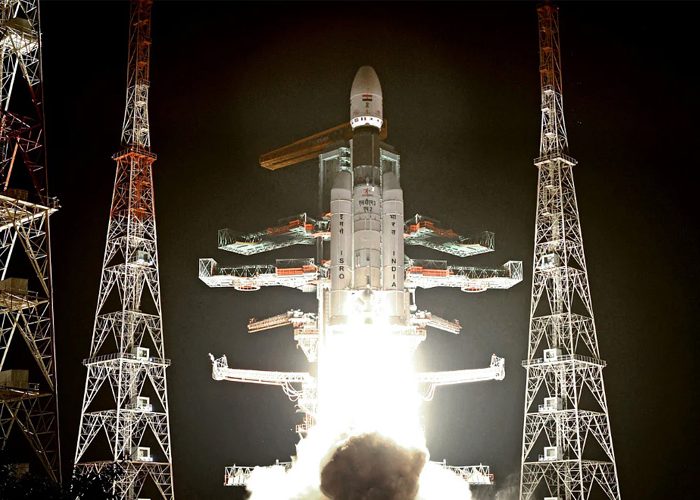
With the opening of space tech to private players India might lead in space technology
In a historic maiden commercial flight, an Indian government rocket successfully placed 36 satellites of the U.K.-based OneWeb into orbit last month. With this latest mission, India has put into low-earth orbit a total of 381 foreign satellites. OneWeb is a joint venture between India Bharti Global and the U.K. government, and it plans to have a constellation of about 650 satellites to offer communication services, with the launch of a further 36 satellites by January. India is now the second-largest satellite communication (SATCOM) market in the world. India’s space and communication technology programs have progressed exponentially in recent years, and from a developmental perspective, the space industry in India could propel the next tech-based economic revolution. Here’s how India is evolving as the global leader in space technology and science.
The global space industry is likely to exceed US$1 trillion by 2040, but there is a shortage of commercial vehicles for putting into orbit multiple satellites to form a constellation. Due to the Ukraine crisis, Russian rockets are not under consideration now by several global SATCOMs, while Europe’s Arianespace and NASA programs are getting delayed and becoming more costly, and the commercial potential of Chinese rockets is not accepted by the West.
This gives India an opportunity to take up the slot. India currently constitutes only 2-3% of the global space economy. The country has become proficient in operating low-cost space projects; it makes good returns from satellite construction and space launch services to a large roster of international clients.
“India is rapidly growing into a global power in designing, developing, and manufacturing space capabilities and is set to become a global leader in space technology,” G Satheesh Reddy said during India Space Congress (ISC) in New Delhi. Reddy is a scientific advisor to the defense minister. He said, “With the opening of space tech to private players, participation by startups and private organizations has brought transformative changes.”
Speaking on space security, he said, “Secure communication is vital for national security and space becoming the fourth frontier of warfare, it is critical to have secure communication using quantum technology.”
At the session “Space: The Fourth Frontier of Warfare” panelists including Lt Gen MU Nair, SO-in-C, Air Vice Marshal DV Khot, Director General – Defence Space Agency, Lt Gen (Retd) Vinod G Khandare, Sr Advisor – Ministry of Defence, Lt Gen PJS Pannu (Retd), Distinguished Fellow – USI and Air Marshal Gurcharan Singh Bedi (Retd), discussed on how space is defining modern warfare and the necessity to have a strong presence in space.
According to Air Vice Marshal, DV Khot said, “Top-down push by the government as new policies are created for the development of space tech and warfare. While space is primarily a military domain, the civilian sector has made rapid strides in space in terms of objects ahead of the military sector and because of the opening up of the space sector to private entities, we can find new talents,” which will help India build a robust technology driven team.
As there is a large dependency on space-based platforms for communication, surveillance systems should be there in space, Lt Gen MU Nair, spoke on the challenges faced by ground personnel in radio communication in mountain terrains. “A robust ecosystem on the ground has to be prepared,” Nair said.
Lt Gen PJS Pannu (Retd) said, “We must dress up the space for warfare. Quantum technology will play a vital role in the days and that investment in quantum technology will have a lasting impact.”
At the India Space Congress, the ‘Space for Defence in India’ report by PwC & SIA-India was released. The report was on innovation and developing cutting-edge technologies in space for defense on the supply side across all three vectors of manufacturing upstream, operations in midstream, and delivery of services downstream, ensuring adequate resilience.











